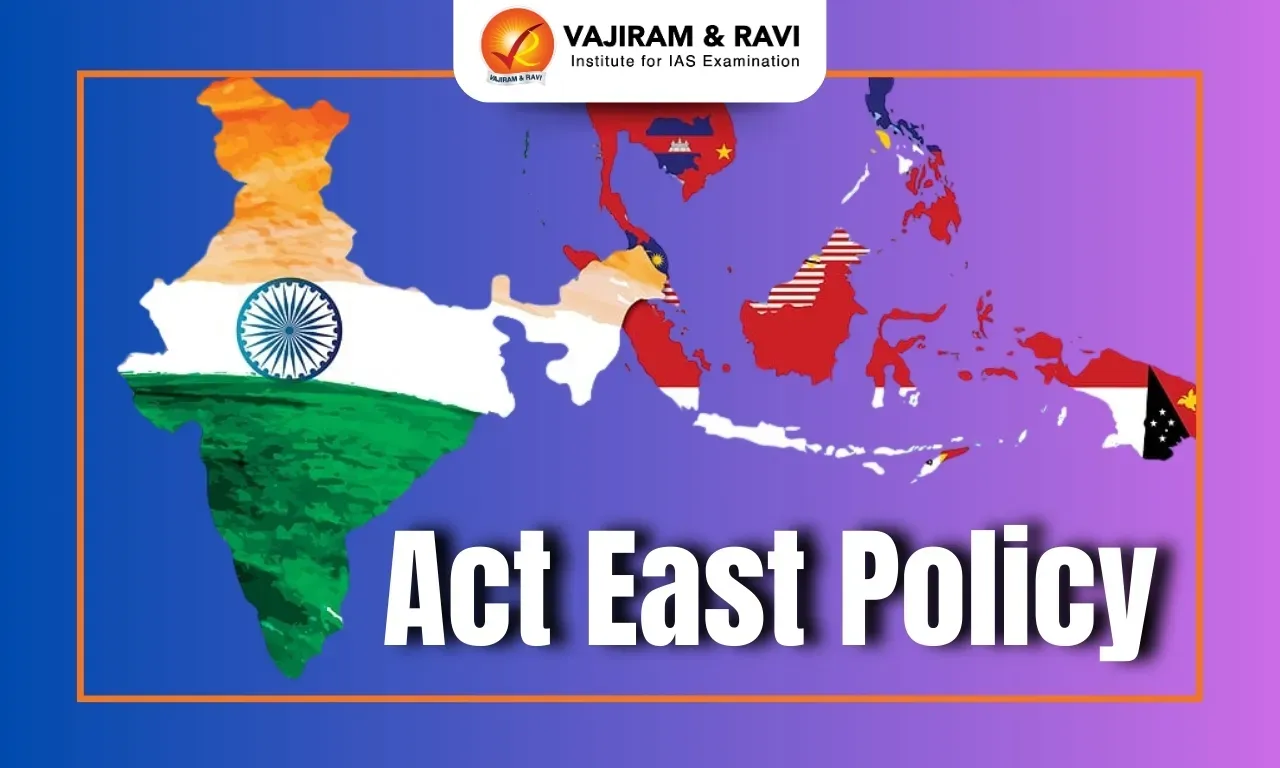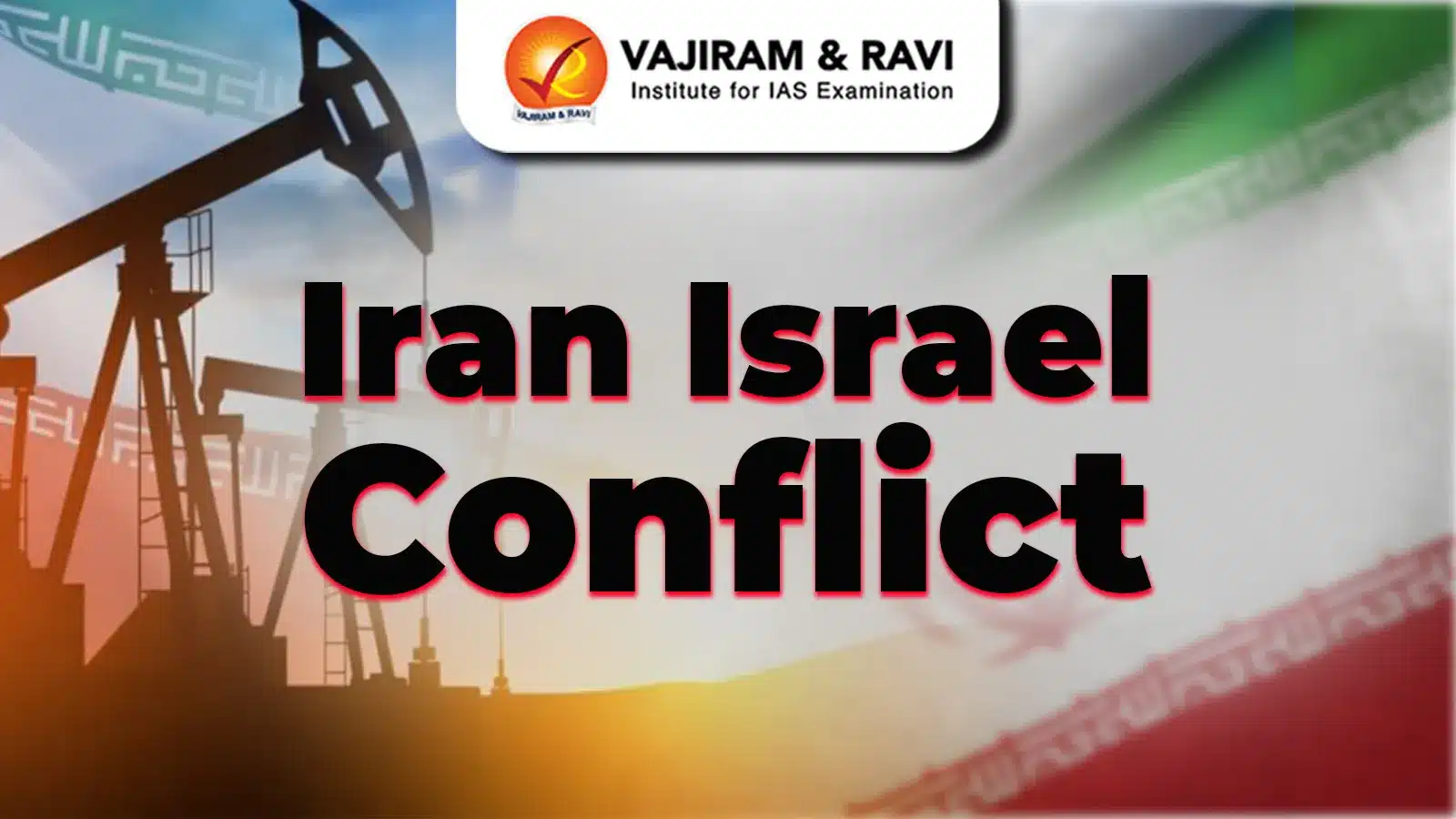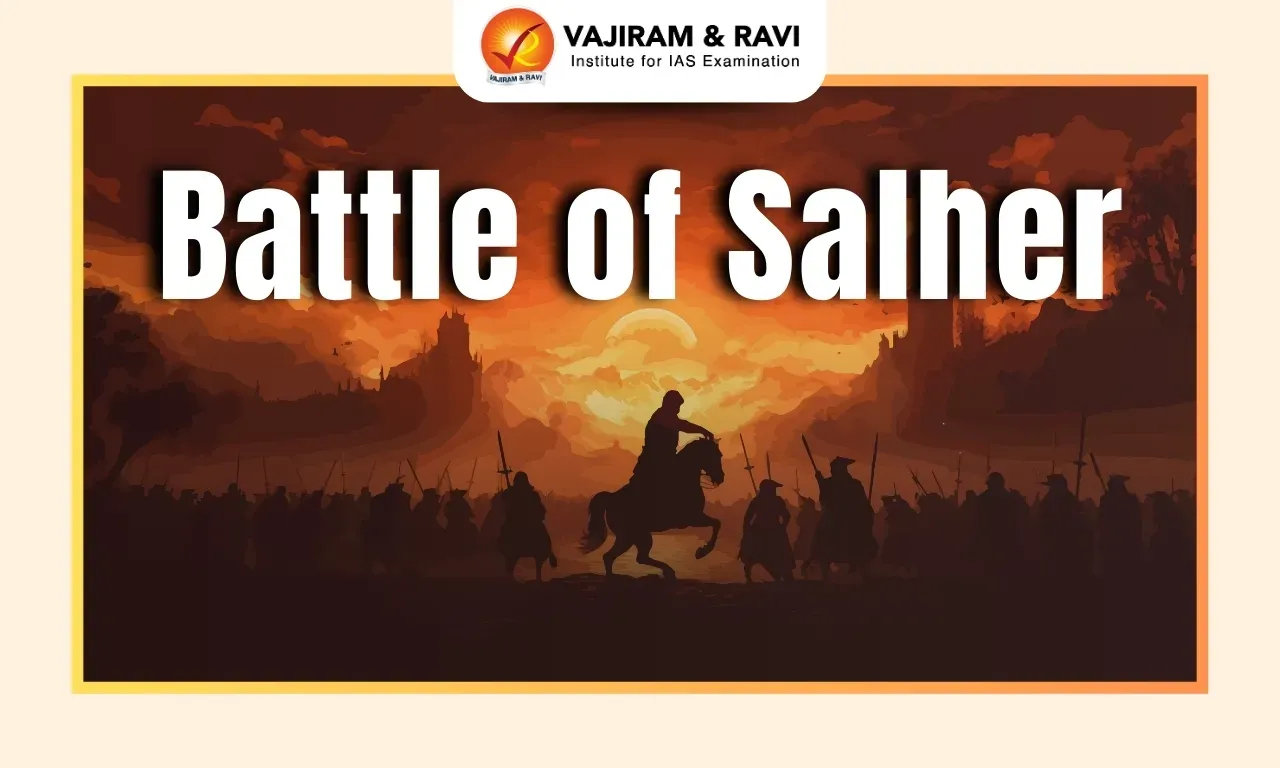Act East Policy of India focuses on strengthening economic and strategic relations with Southeast Asian countries. This policy started in 2014, improves the Indian relations in Asia-Pacific region. India’s Act East Policy promotes regional stability and development through cultural ties, economic integration and strategic partnerships.
Act East Policy
The Act East Policy aims at creating India’s engagement with southeast Asian Nations. Introduced by the Prime Minister Narendra Modi, the previously existing Look East Policy was upgraded to India’s Act East Policy transforming India’s approach from mere “looking” to active participation in the region’s affairs. The policy strengthens economic, cultural and strategic ties with Indo-Pacific ties with the Indo-Pacific region to promote regional cooperation.
India’s Act East Policy Objectives
India’s Act East Policy aims to strengthen its engagement with countries in the Indo-Pacific region, with ASEAN at its core. The objectives are:
- Improving economic partnerships with the Indo-Pacific region by enhancing investment and trade.
- Strengthening better people to people relations by deepening cultural understanding and exchanges.
- Creating sustained diplomatic engagement by building long-term strategic partnerships through regional, multilateral and bilateral levels.
- Boost regional cooperation and integration by improving connectivity in political, cultural, social and political spheres.
- Collaborates on issues like counter-terrorism, maritime security and disaster management by contributing to the overall prosperity and stability region.
Act East Policy Pillars
The Act East Policy has three pillars:
- Economic Pillar: focus on integration with global supply chains in East Asia and Southeast by boosting economic cooperation, investment and boosting trade.
- Socio- Cultural Pillar: Deepens social ties and mutual understanding across the region by focusing on cultural exchanges and people to people connections.
- Political Security Pillar: Focus is on regional stability and counterbalancing external influences by strengthening security ties and defense.
Key Features of Act East Policy
The Act East Policy fosters multi-dimensional ties across economic, strategic, cultural, and connectivity domains.
- ASEAN-Centric Approach – Strengthens ties with ASEAN nations and associated frameworks like ARF, EAS, and ADMM+.
- 4C’s Framework – Emphasizes Culture, Commerce, Connectivity, and Capacity Building for regional engagement.
- Economic Integration – Boosts trade, investment, and global supply chain integration in Southeast & East Asia.
- Strategic & Security Ties – Enhances defense partnerships with Japan, Vietnam, and the Philippines.
- Connectivity & Infrastructure – Develops key projects like the India-Myanmar-Thailand Trilateral Highway.
- Multilateral Engagement – Strengthens India’s role in ASEAN, BIMSTEC, and the East Asia Summit.
List of Projects Under the Act East Policy
Several key projects have been launched under the Act East Policy to enhance regional connectivity, trade, and cultural ties:
- India-Myanmar-Thailand Trilateral Highway – Strengthening road connectivity between India and Southeast Asia.
- Kaladan Multi-Modal Transit Transport Project – Linking India’s eastern seaports with Myanmar’s Sittwe port for efficient cargo movement.
- Agartala-Akhaura Rail Link – Boosting cross-border connectivity between India’s northeast and Bangladesh.
- Digital Public Infrastructure (DPI) – Advancing digital collaboration through the India-ASEAN Fund for the Digital Future.
- Mekong-India Economic Corridor – Integrating India’s east coast with Southeast Asia via strategic infrastructure.
- ITEC Programme – Offering technical and capacity-building support to nations like Cambodia, Laos, and Vietnam.
- International Buddhist Confederation (IBC) – Strengthening cultural and spiritual ties through shared Buddhist heritage.
- BIMSTEC Initiatives – Advancing regional cooperation under the Bay of Bengal Initiative.
Look East Policy vs Act East Policy
The Look East Policy was introduced in 1991 with a focus on economic liberalisation and trade relations establishment with Southeast Asian Nations while on the other land Act East Policy was introduced in 2014. The differences between India’s Look East Policy and Act East Policy are:
|
Aspect |
Look East Policy |
Act East Policy |
|
Launch |
Initiated in 1991 by PM Narasimha Rao |
Launched in 2014 by PM Narendra Modi |
|
Focus |
Economic and strategic ties with Southeast Asia |
Economic, strategic, and cultural ties with Southeast Asia and Indo-Pacific countries. |
|
Geographical Scope |
Mainly focused on Southeast Asia and India’s eastern neighbors |
Emphasizes Southeast Asia, Indo-Pacific region, and development of India’s North East. |
|
Key Objectives |
To establish stronger connections with India’s extended neighborhood. |
To boost trade, business, cultural exchanges, and connectivity, particularly benefiting India’s North East. |
|
Security Dimension |
Limited focus on security |
Strong emphasis on security cooperation |
|
Infrastructure Projects |
Limited infrastructure focus |
Major infrastructure projects like the Asian Trilateral Highway and the Agartala-Akhaura Rail Link |
|
Outcome and Intent |
Economic ties and diplomatic engagement, though the impact was gradual. |
More assertive and comprehensive approach to regional influence and development. |
Last updated on June, 2025
→ UPSC Notification 2025 was released on 22nd January 2025.
→ UPSC Prelims Result 2025 is out now for the CSE held on 25 May 2025.
→ UPSC Prelims Question Paper 2025 and Unofficial Prelims Answer Key 2025 are available now.
→ UPSC Calendar 2026 is released on 15th May, 2025.
→ The UPSC Vacancy 2025 were released 1129, out of which 979 were for UPSC CSE and remaining 150 are for UPSC IFoS.
→ UPSC Mains 2025 will be conducted on 22nd August 2025.
→ UPSC Prelims 2026 will be conducted on 24th May, 2026 & UPSC Mains 2026 will be conducted on 21st August 2026.
→ The UPSC Selection Process is of 3 stages-Prelims, Mains and Interview.
→ UPSC Result 2024 is released with latest UPSC Marksheet 2024. Check Now!
→ UPSC Toppers List 2024 is released now. Shakti Dubey is UPSC AIR 1 2024 Topper.
→ Also check Best IAS Coaching in Delhi
Act East Policy FAQs
Q1. What is the Act East Policy in India?+
Q2. What are the 3 C's of Act East Policy?+
Q3. What are the 4 C's of Act East Policy?+
Q4. Who launched India's Look East Policy?+
Q5. What is the difference between Look East and Act East Policy?+
Tags: act east policy
























